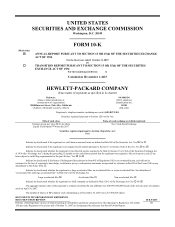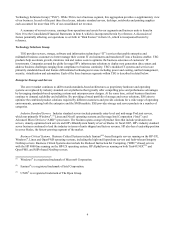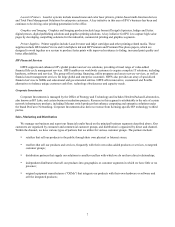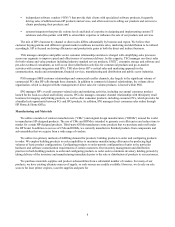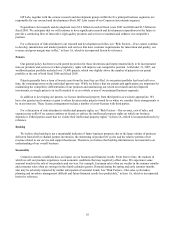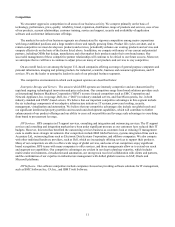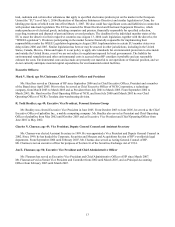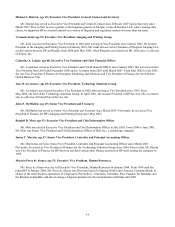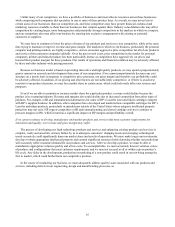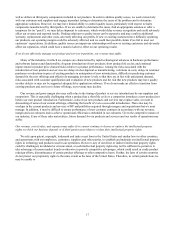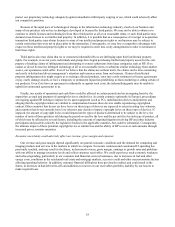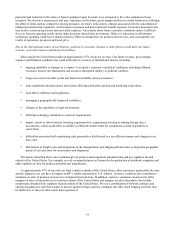HP 2007 Annual Report Download - page 24
Download and view the complete annual report
Please find page 24 of the 2007 HP annual report below. You can navigate through the pages in the report by either clicking on the pages listed below, or by using the keyword search tool below to find specific information within the annual report.HP Labs, together with the various research and development groups within the five principal business segments, are
responsible for our research and development efforts. HP Labs is part of our Corporate Investments segment.
Expenditures for research and development were $3.6 billion in each of fiscal years 2007 and 2006 and $3.5 billion in
fiscal 2005. We anticipate that we will continue to have significant research and development expenditures in the future to
provide a continuing flow of innovative, high-quality products and services to maintain and enhance our competitive
position.
For a discussion of risks attendant to our research and development activities, see “Risk Factors—If we cannot continue
to develop, manufacture and market products and services that meet customer requirements for innovation and quality, our
revenue and gross margin may suffer,” in Item 1A, which is incorporated herein by reference.
Patents
Our general policy has been to seek patent protection for those inventions and improvements likely to be incorporated
into our products and services or where proprietary rights will improve our competitive position. At October 31, 2007, our
worldwide patent portfolio included over 31,000 patents, which was slightly above the number of patents in our patent
portfolio at the end of both fiscal 2006 and fiscal 2005.
Patents generally have a term of twenty years from the time they are filed. As our patent portfolio has been built over
time, the remaining terms on the individual patents vary. While we believe that our patents and applications are important for
maintaining the competitive differentiation of our products and maximizing our return on research and development
investments, no single patent is in itself essential to us as a whole or any of our principal business segments.
In addition to developing our patents, we license intellectual property from third parties as we deem appropriate. We
have also granted and continue to grant to others licenses under patents owned by us when we consider these arrangements to
be in our interests. These license arrangements include a number of cross-licenses with third parties.
For a discussion of risks attendant to intellectual property rights, see “Risk Factors—Our revenue, cost of sales, and
expenses may suffer if we cannot continue to license or enforce the intellectual property rights on which our business
depends or if third parties assert that we violate their intellectual property rights,” in Item 1A, which is incorporated herein by
reference.
Backlog
We believe that backlog is not a meaningful indicator of future business prospects due to the large volume of products
delivered from shelf or channel partner inventories, the shortening of product life cycles and the relative portion of net
revenue related to our service and support businesses. Therefore, we believe that backlog information is not material to an
understanding of our overall business.
Seasonality
General economic conditions have an impact on our business and financial results. From time to time, the markets in
which we sell our products experience weak economic conditions that may negatively affect sales. We experience some
seasonal trends in the sale of our products and services. For example, European sales often are weaker in the summer months
and consumer sales often are stronger in the fourth calendar quarter. Demand during the spring and early summer months
also may be adversely impacted by market anticipation of seasonal trends. See “Risk Factors—Our sales cycle makes
planning and inventory management difficult and future financial results less predictable,” in Item 1A, which is incorporated
herein by reference.
10



